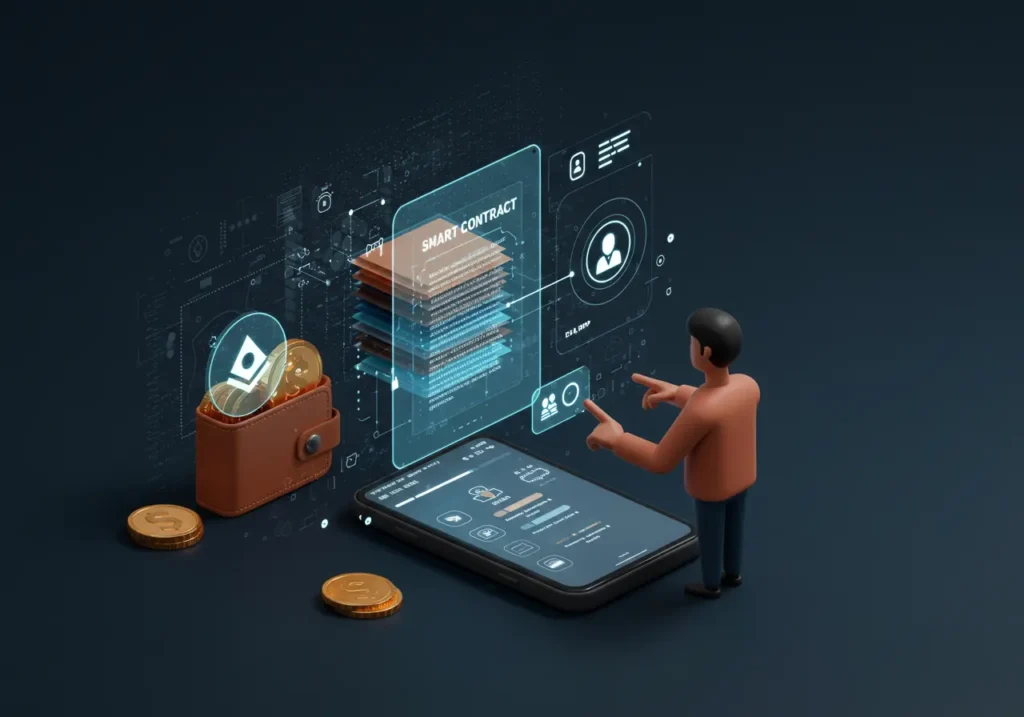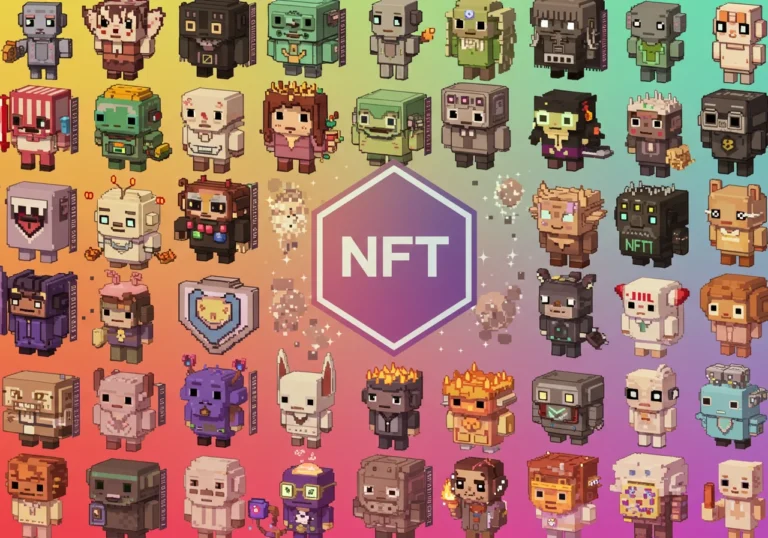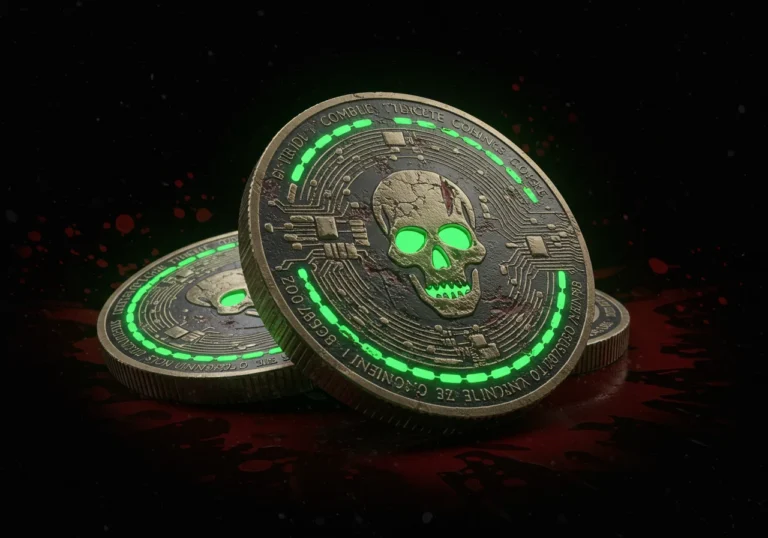What’s Web3? How Crypto Fits into the Next Era of the Internet
Have you ever wished the internet felt a little more like your own place — where you decide what matters, who earns what, and where your info doesn’t get sold without your say? If that idea makes your chest breathe a little easier, you’re not alone. The internet is changing, and the next chapter is being called Web3.
Web3 begins the moment people move from simply using websites to actually owning bits of what they use online.
What is Web3? A simple, human definition

Web3 is the idea of a new version of the internet where users, not big companies, control their own data, identity, and digital assets.
It’s built on blockchain technology, which means information is stored in a transparent and decentralized way, without relying on a single authority.
In Web3, apps and services (often called decentralized applications or dApps) run on networks owned by the community, allowing people to interact, trade, and create directly with each other — often using cryptocurrencies or NFTs — without middlemen.
It’s like moving from renting space on someone else’s platform to actually owning your corner of the internet.
How crypto fits in — the easy view
Cryptocurrency is like the money of the Web3 world. It helps people pay for things, vote, and signal value without a bank in the middle. When people talk about the Evolution of internet with cryptocurrencies, they mean that money itself is being reshaped to work more naturally with new online tools. In the real world, that’s like swapping cash for a digital token that proves you paid, and that token can be checked by anyone. This is one of the reasons many Web3 platforms include crypto features.
Key building blocks — what makes Web3 possible
Blockchain integration in internet
A blockchain is a kind of digital notebook that many people share. When something important happens — like you buying a digital item — it gets written into this notebook. Because many computers keep copies, the record is hard to erase or fake. That’s why blockchain integration in internet projects are central to Web3: they give a public place to record ownership and rules.
Smart contracts in Web3
Smart contracts are small programs that live on blockchains. They automatically do things when certain conditions are met — like paying an artist every time their song is sold. This is Smart contracts in Web3 in action: code that enforces simple agreements without middlemen. They are not magical; they are predictable rules that run by themselves.
Decentralized web technologies

This phrase covers all the tools that avoid a single point of control: storage systems that are shared, identity tools you control, and places where groups of people make decisions together. These technologies are what let Web3 offer alternatives to the centralized web most of us use today.
Real ways Web3 changes things (examples you’ll recognize)
Impact of Web3 on online transactions
Imagine buying a limited ticket to a concert. In Web3, the ticket might be a token you truly own and can resell safely — and the system could automatically give a cut to the artist when that resale happens. That’s the Impact of Web3 on online transactions: fewer middlemen and more automated fairness. It can speed things up and make rules clearer.
Decentralized finance in internet (DeFi)
DeFi is like taking basic bank services — savings, loans, trading — and running them on public code. People can lend money to each other, trade assets, or earn interest without going through a bank. It’s still new and has risks, but it shows how finance can change when it’s built directly on the internet.
Web3 platforms for decentralized applications
These platforms host apps (often called dApps) that run on blockchain-style tech. Think of them like app stores, but many apps can share data or tokens in ways old apps can’t. That lets new business models and creative tools emerge.
Web3 interoperability with traditional web
A huge idea in Web3 is making sure newer systems can talk to the older web we all use. Web3 interoperability with traditional web means your Web3 wallet or token can work with regular websites, so you don’t need two disconnected lives online. People are building bridges so the two worlds can co-exist nicely.
Safety and security — what to know (in plain terms)
Web3 brings new safety features, but also new things to watch for.
- Security features in Web3 ecosystem include cryptographic proofs and decentralized checks — this makes tampering harder. But it also puts responsibility on the user: if you lose your private key, you may lose access.
- Because systems are often public, mistakes in code can be visible and can cause money loss. That’s why some projects get audited (checked) before serious use.
- scams exist, just like in the regular web. Phishing, fake projects, or poor code can cause trouble. Being careful and starting small is wise.
The good side is that many Web3 projects design security so users can verify things themselves — no blind trust required.
Everyday scenarios — how someone like you might use Web3

- Buying digital art: You like an illustration by a new artist; you buy a token that proves you own the original, and the artist gets a royalty if it’s sold later.
- Playing a game: You find a rare sword that’s truly yours and can be traded outside the game — the NFT acts like a tradable collectible.
- Lending and borrowing: You can lend crypto and earn interest through DeFi, without a bank as a middleman.
- Identity and login: Instead of a username and password, you log in with your self-owned key — that means fewer passwords to forget.
Who benefits, and who should be cautious?
People who might benefit: creators who want direct payment, users who want more control over their data, and communities that want shared ownership models.
People who should be cautious: those who expect quick wealth, or who aren’t ready to secure private keys, or who don’t want to manage the technical side. Web3 opens doors, but it also asks you to be a bit more responsible in how you handle your digital life.
Interoperability and the future: will Web3 replace the old web?
Not overnight. The most likely path is gradual: tools that fit both worlds will grow. The best outcomes come when the strengths of the old web — ease and familiarity — meet the strengths of Web3 — ownership and decentralization. That’s why folks work on Web3 interoperability with traditional web: to make the shift seamless and useful for everyone.
Practical tips if you want to start exploring
- Learn the basics slow. Read about wallets, private keys, and how to verify projects.
- Use trusted platforms first, and keep amounts small until you feel comfortable.
- Back up your keys safely — this is like a password that cannot be reset.
- Follow creators and communities you trust. Many helpful people share simple tutorials and honest reviews.
- Keep security software up to date and be careful with links or unexpected messages.
A quick look at controversies — honest talk
Web3 has bright promises, but it also faces real criticism: some say it’s a buzzword, others worry about concentration of power in new hands, and several implementations have been buggy. Additionally, environmental concerns appeared in some networks, though many systems are moving to greener designs. It’s healthy to hold both hope and skepticism — they help us build smarter systems.
Closing thoughts — why this matters to you
This change is not just technical. It’s about who has voice and value online. Web3 asks a simple question: can we build an internet where people have more ownership and say in the rules? Some parts are already working, others are still being figured out. If you approach Web3 with care, curiosity, and small steps, it can open new ways to create, share, and trade value online.
And if you ever feel overwhelmed, that’s okay. Start by watching one small tutorial, or following one trusted creator. Over time, the pieces will fit together. The internet keeps evolving — and you don’t have to be an expert to be part of that change.
Bullet-point summary — quick takeaways
- Web3 aims to make the web more user-owned using decentralized web technologies.
- Blockchain integration in internet projects record ownership and make trust verifiable.
- Evolution of internet with cryptocurrencies gives new digital ways to pay and signal value.
- Impact of Web3 on online transactions: fewer middlemen and more automated fairness.
- Smart contracts in Web3 automate rules and payments without a central server.
- Decentralized finance in internet (DeFi) offers bank-like services on public code, with opportunities and risks.
- Web3 interoperability with traditional web is key to a smooth transition between old and new systems.
- Cryptocurrency adoption in Web3 era helps power transactions, voting, and incentives.
- Web3 platforms for decentralized applications host dApps that can share tokens and data in new ways.
- Security features in Web3 ecosystem are strong but require personal responsibility (like backing up keys).

Hello, I’m Edmilson Dias, founder of CoinBringer. I created this platform to guide people through the fast-moving world of cryptocurrency with clarity and safety. With years of research in blockchain and digital security, my goal is to translate complex topics into practical knowledge, offering reliable tutorials, safety insights, and guidance for both newcomers and experienced users.
Discover more from CoinBringer
Subscribe to get the latest posts sent to your email.







